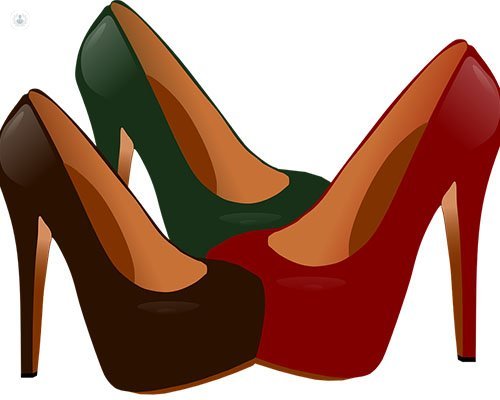Improper footwear deformed feet
Written by:We use your feet to get up, walking, running, etc; They are our independence. But, have you ever think of them? In general, we do not give them any importance because we are too busy with "everything else".
However, the feet give us that freedom of action which we are not aware until we lose it .
For example, when choosing footwear, we prioritize fashion, style or beauty, regardless of the physiological aspect. It is not until your feet hurt us and say, "here we come," we look at them.
That day everything changes, and I receive the patient in my office faced circumstances, perplexed, amazed:
- A fracture? Now? Can not be. Now it can not be. I do not have time now!
- But you have not thought that those shoes, so narrow, with the heel and the sole, are not fit to run behind the bus?

Deformities of the feet, bunions or hallux valgus
Sometimes ailments do not come so fast (sprain, fracture, etc.) and the patient begins to suffer from a foot deformity caused by the use of poor footwear, usually too high, narrow shoe, which arouses the genetic basis of any deformities like bunions or hallux valgus.
But although there is a genetic basis, the bunion or claw toe often appears only after prolonged use of inappropriate footwear (consider that inappropriate footwear with high heels and narrow toe, slim sole and tough, rigid, non - adaptive and non - breathable) .
This shoe causes foot deformity consisting mainly of the first and fifth fingers narrow and closer together, while the other fingers, the second, third and fourth rise and flex pose a deformity called "fingers claw. "
But we do not usually give importance to this malformation. Usually the patient comes to the doctor's specialist Traumatology years after suffering severe pain, calluses and wounds; bunions and hammertoes.
Treatment bunion or hallux valgus
Fortunately, treatment of these diseases and deformities has evolved dramatically in the last 10 years. Aggressive and painful surgical treatments have given way to minimally invasive treatments. That is, what many people know as "operate without opening".
The advantages of this innovative technique are many: less pain, less bleeding, minimal disruption of the anatomy, limiting the aesthetic damage, minimal surgical infections, rapid recovery and return to normal life, etc.
Foot deformities: the hammer toe or claw toe
Nerves give forefoot sensitivity compressed and inflamed, producing a dull, intense pain, tingling and cramps in what is known as Morton 's neuroma.
The arch becomes more pronounced and the plantar fascia becomes inflamed, being able to form a calcaneus bone spur, a bony spike that sticks in the heel when walking.
On the other hand, the Metatarsalgia occurs when body weight is distributed incorrectly and increases pressure on the metatarsal heads.
So if it is true that there is treatment for each foot deformities, it is advised not reach this end and foot care.



